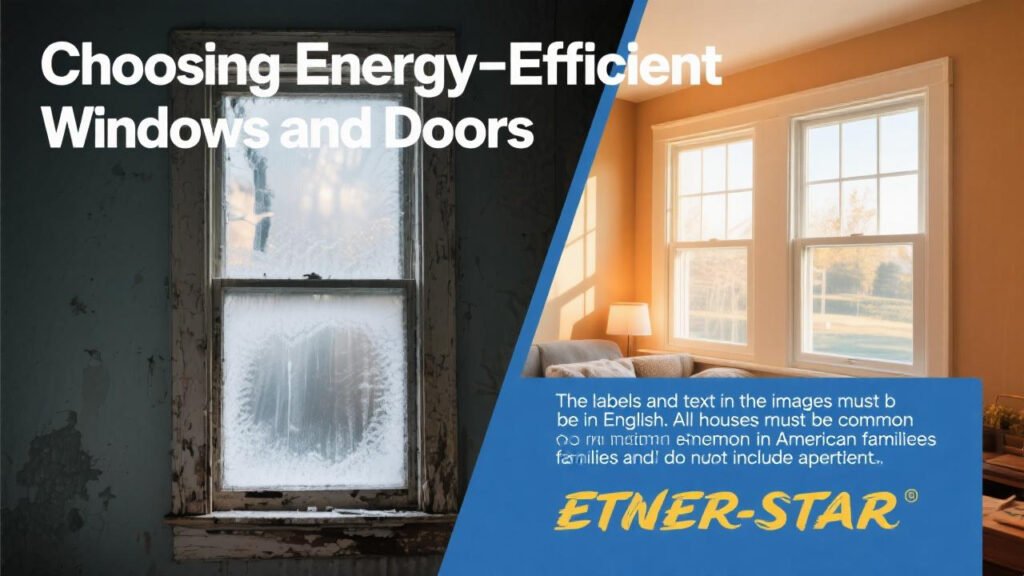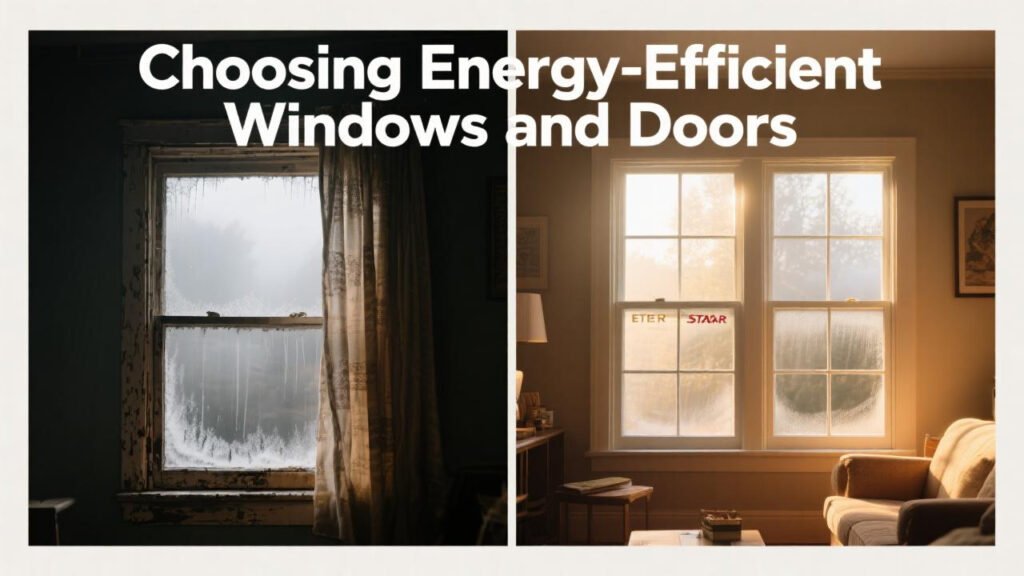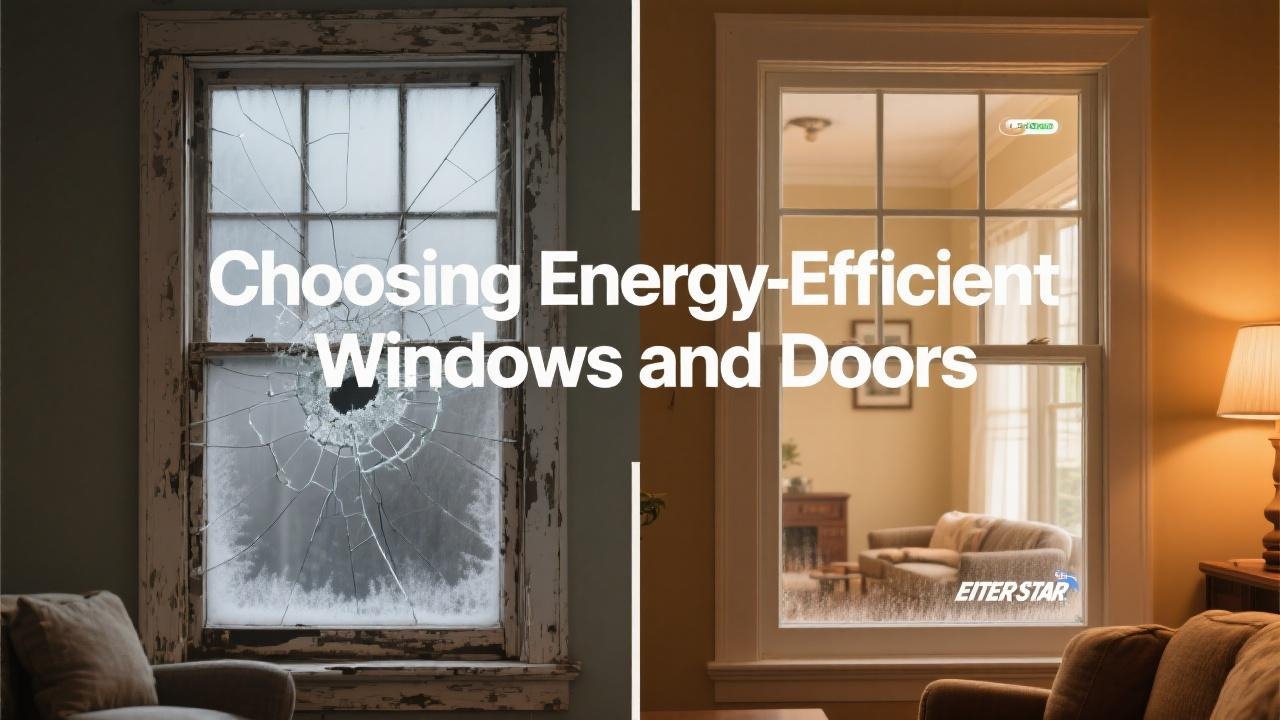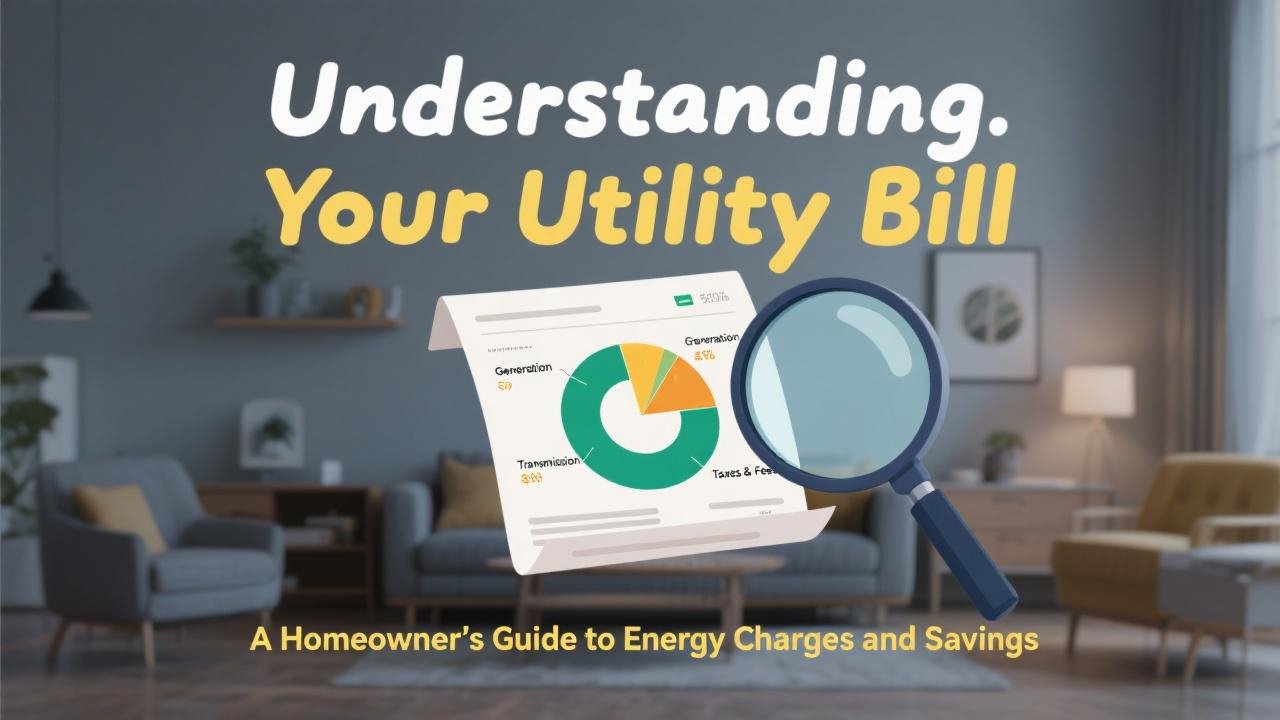Upgrading Your Home’s Eyes and Entryways for Maximum Efficiency
Windows and doors are more than just functional components of your home; they are critical elements of its thermal envelope. In 2025, with rising energy costs and a greater focus on sustainable living, choosing energy-efficient windows and doors is a smart investment that can significantly reduce your heating and cooling bills, improve home comfort, and even increase your property value. Old, drafty, or single-pane windows and poorly sealed doors can be major sources of energy loss. This guide will help you understand what makes windows and doors energy-efficient and what to look for when making these important upgrades.
Why Energy-Efficient Windows and Doors Matter
- Reduced Heat Loss in Winter: High-performance windows and doors minimize the escape of heated air, keeping your home warmer and reducing the workload on your heating system.
- Reduced Heat Gain in Summer: They block unwanted solar heat from entering your home, keeping it cooler and lessening the strain on your air conditioner.
- Lower Energy Bills: By improving your home’s thermal resistance, you’ll use less energy for heating and cooling, leading to noticeable savings on your utility bills. Replacing old windows with ENERGY STAR certified windows can save homeowners an average of $101-$583 per year when replacing single-pane windows, and $27-$197 per year when replacing double-pane, clear glass windows.
- Improved Comfort: Eliminate cold drafts near windows and doors in winter, and reduce hot spots in summer. Consistent indoor temperatures enhance overall comfort.
- Reduced Condensation: Energy-efficient windows with better insulation are less prone to interior condensation, which can damage window sills and lead to mold growth.
- Noise Reduction: Multiple panes of glass and better seals can also reduce the amount of outside noise entering your home.
- UV Protection: Low-E coatings on windows can block a significant portion of harmful ultraviolet (UV) rays, protecting your furniture, carpets, and artwork from fading.

Key Features of Energy-Efficient Windows in 2025:
When shopping for energy-efficient windows, look for these features and performance ratings, often found on the National Fenestration Rating Council (NFRC) label:
- Multiple Panes of Glass (Double or Triple Glazing):
- Most energy-efficient windows today are double-glazed (two panes of glass) or triple-glazed (three panes). The air or gas trapped between the panes acts as an insulator.
- Low-Emissivity (Low-E) Glass Coatings:
- Low-E coatings are microscopically thin, virtually invisible metallic layers applied to the glass surface. They reflect infrared heat (long-wave radiation) while still allowing visible light to pass through.
- In winter: Reflects heat back into your home.
- In summer: Reflects the sun’s heat away from your home.
- There are different types of Low-E coatings designed for various climates (e.g., high solar gain Low-E for cold climates, low solar gain Low-E for hot climates).
- Inert Gas Fills (Argon or Krypton):
- The space between the glass panes in double or triple-glazed windows is often filled with an inert, non-toxic gas like argon or krypton. These gases are denser than air and provide better insulation, reducing heat transfer.
- Efficient Frame Materials:
- Vinyl: Durable, low-maintenance, and offers good thermal insulation. A popular and cost-effective choice.
- Wood: Good natural insulator but requires more maintenance (painting/staining) to prevent rot and warping.
- Fiberglass: Strong, durable, low-maintenance, and provides excellent insulation. Can be more expensive than vinyl.
- Composite: Made from a mix of materials (e.g., wood fibers and polymers), offering the look of wood with better durability and lower maintenance.
- Aluminum: Strong and durable but a poor insulator (conducts heat easily) unless it has a “thermal break” – an insulating strip between the interior and exterior frame components. Generally less common for highly efficient residential windows without thermal breaks.
- Warm-Edge Spacers:
- Spacers keep the glass panes the correct distance apart. “Warm-edge” spacers are made of materials that conduct less heat than traditional metal spacers, reducing heat loss around the edges of the window and minimizing condensation.
- NFRC Performance Ratings:
- U-Factor: Measures how well the window prevents heat from escaping your home. Lower U-factor = Better insulation. Look for U-factors of 0.30 or less for good performance.
- Solar Heat Gain Coefficient (SHGC): Measures how much solar heat the window allows to pass through into your home. Lower SHGC = Less solar heat gain. In hot climates, a low SHGC (e.g., 0.25 or less) is desirable. In cold climates, a moderate SHGC might be beneficial for passive solar heating in winter.
- Visible Transmittance (VT): Measures how much visible light comes through the window. Higher VT = More daylight. (Typically 0 to 1).
- Air Leakage (AL): Measures how much air will pass through cracks in the window assembly. Lower AL = Less drafty. Look for 0.3 cfm/sq ft or less.
Key Features of Energy-Efficient Doors in 2025:
- Core Materials:
- Fiberglass: Offer excellent insulation (often with foam cores), durability, and low maintenance. Can mimic the look of wood.
- Steel: Strong and secure, often with a foam core for insulation. Can be prone to dents and conduct heat if not well-insulated.
- Wood: Good natural insulator but requires regular maintenance and can warp or swell with moisture changes.
- Insulation (R-Value): Look for doors with a high R-value, indicating better insulating properties.
- Multiple Glass Panes (if applicable): If the door has glass lites, they should be double or triple-glazed with Low-E coatings, similar to windows.
- Weatherstripping: High-quality, durable weatherstripping around the entire perimeter of the door is essential to create an airtight seal when closed.
- Adjustable Threshold: Helps create a tight seal at the bottom of the door.
- ENERGY STAR Certification: Like windows, doors can also earn the ENERGY STAR label if they meet specific U-factor and SHGC requirements based on climate zone.

ENERGY STAR Certification for Windows and Doors:
In 2025, looking for the ENERGY STAR label is one of the easiest ways to identify energy-efficient windows and doors.
* ENERGY STAR certified windows and doors are independently tested and certified to meet strict energy efficiency guidelines set by the EPA for your specific climate zone.
* They can significantly lower household energy bills compared to non-certified products.
* For the Energy Efficient Home Improvement Credit (federal tax credit), exterior windows and skylights must meet ENERGY STAR Most Efficient certification requirements to qualify for a credit of up to $600. Exterior doors must meet applicable ENERGY STAR requirements for a credit of up to $250 per door ($500 total).
Installation Matters:
Even the most energy-efficient window or door will not perform well if it’s improperly installed. Ensure you hire a qualified, experienced contractor who uses proper installation techniques, including correct flashing, sealing, and insulation around the frames.
A Clear View to Savings and Comfort
Upgrading to energy-efficient windows and doors in 2025 is a smart investment that enhances your home’s comfort, reduces energy consumption, lowers utility bills, and contributes to a healthier environment. By understanding key features like Low-E glass, multiple panes, efficient frame materials, and looking for the ENERGY STAR label and NFRC ratings, you can make informed choices that will benefit your home for years to come. Don’t forget to explore available federal tax credits and local rebates to make these valuable upgrades even more affordable.



